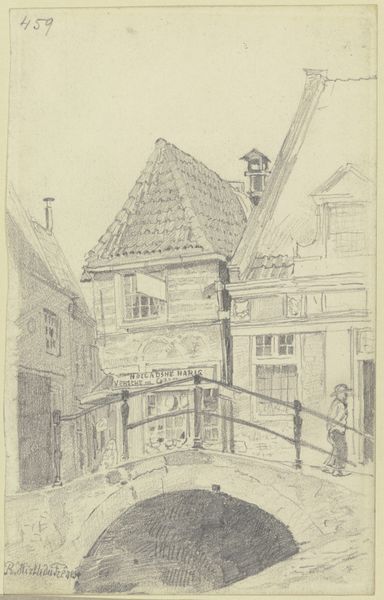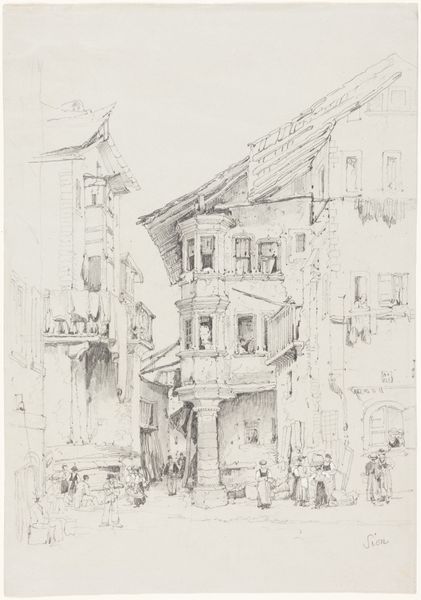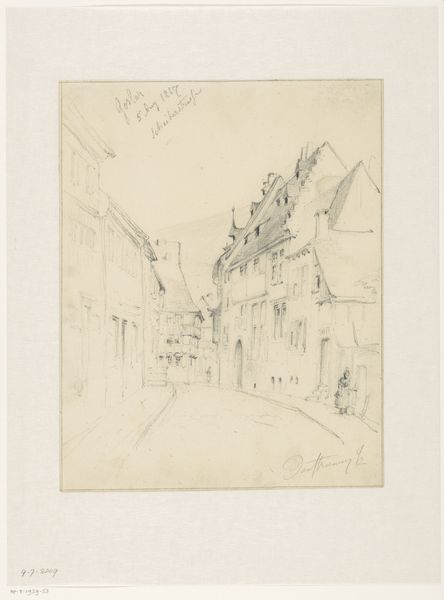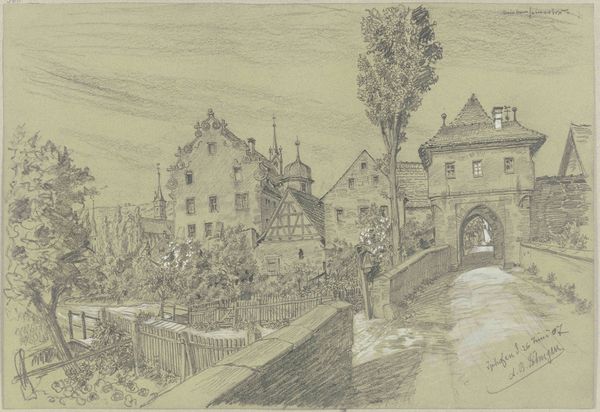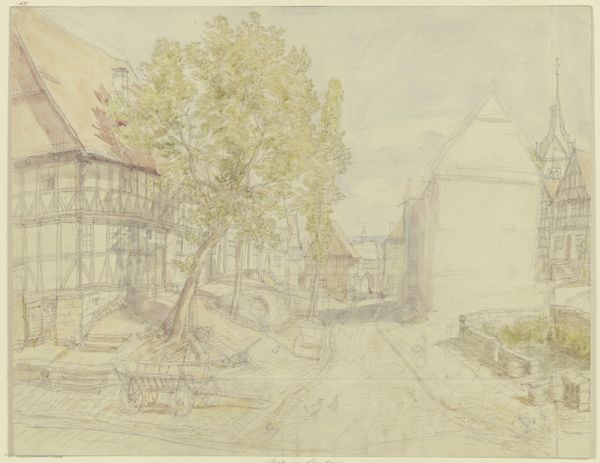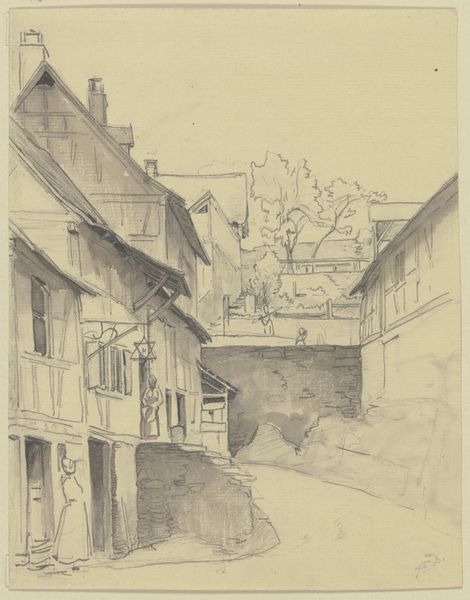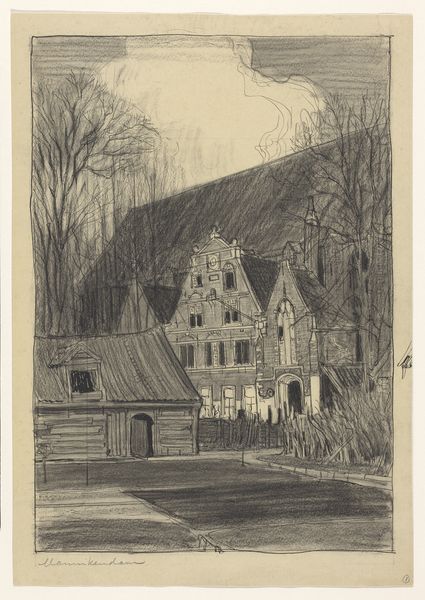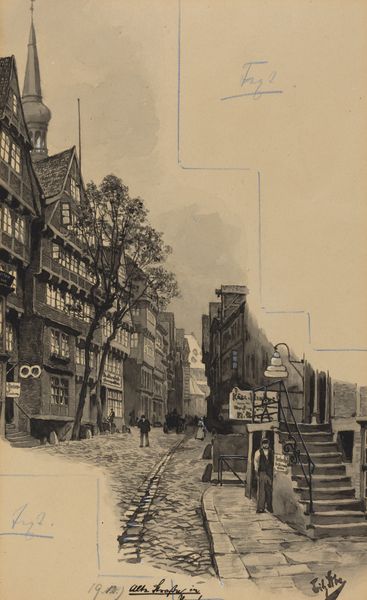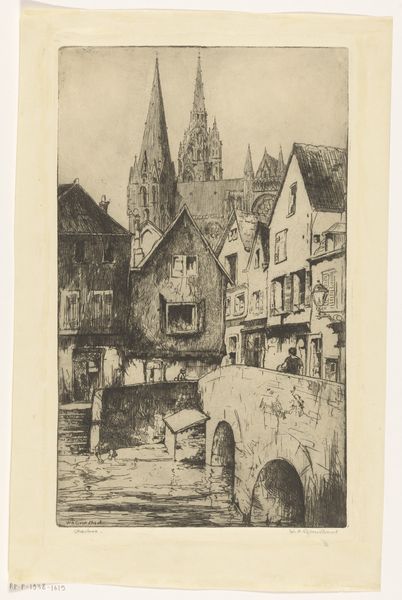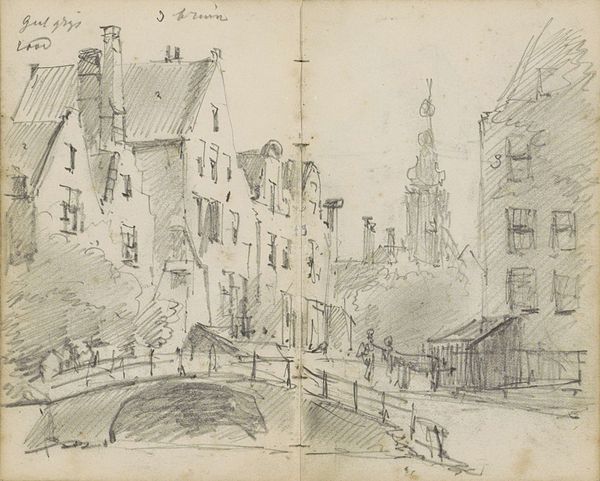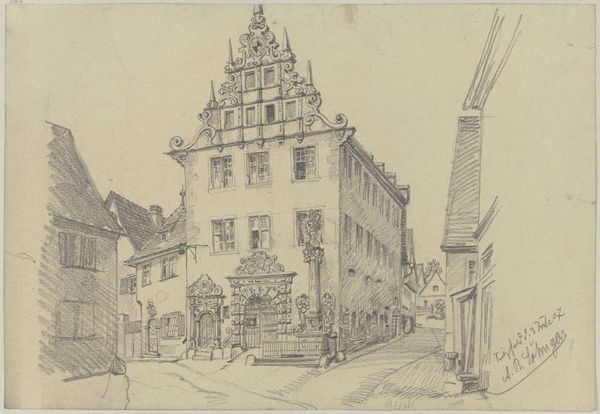
Copyright: Public Domain
Editor: Wilhelm Amandus Beer's 1858 pencil drawing, "Marktplatz in Miltenberg am Main," presents a quaint German cityscape. The architectural details are quite captivating; the clustered buildings give a sort of dreamy impression, though muted. What visual relationships or artistic intentions do you observe within this composition? Curator: The network of lines is captivating. Note the distinct use of pencil strokes that gives form to architectural structures and the placement of light across various planes. How do you perceive the use of hatching and cross-hatching in rendering depth and volume within the fountain? Editor: I think that the hatching is finer towards the back, making it appear farther away than the very defined strokes of the buildings closer to the front. Curator: Precisely. It leads the eye and directs how one experiences the composition of forms and spaces. We might observe a sort of visual poetics at play in how light shapes form and influences our spatial comprehension, a cornerstone of formal analysis. Editor: Interesting! Do you think the architectural composition reflects societal structures as well? Curator: While socio-historical context may be one means of decoding the work, my interest lies primarily in examining its internal dynamics. The buildings stand on their own through contrast and placement of light. To bring in socio-historical ideas opens a completely different point that isn't apparent just through observation of the artwork itself. Editor: I see. It's like appreciating a piece for its inherent qualities rather than looking beyond its immediate form. Thank you. Curator: Indeed, the visual syntax employed within the artwork allows one to see how artistic principles articulate meaning beyond what the image merely depicts. A close looking at the details is a journey in itself.
Comments
No comments
Be the first to comment and join the conversation on the ultimate creative platform.
